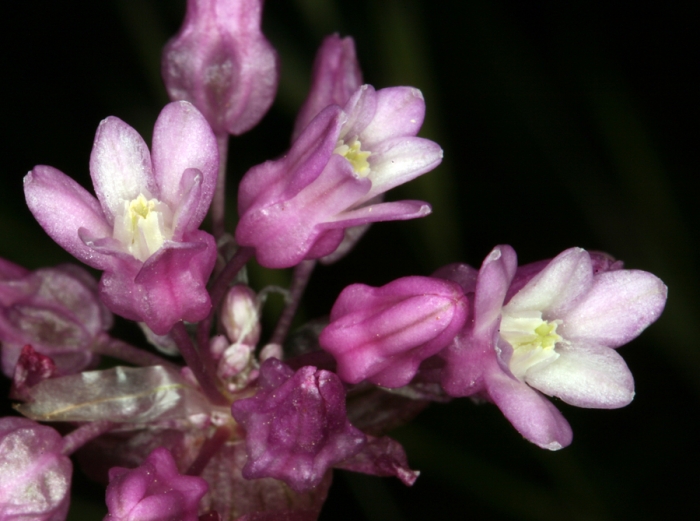Twining Snakelily
(Dichelostemma volubile)
Twining Snakelily (Dichelostemma volubile)
/
/

Steve Matson
CC BY 4.0
Image By:
Steve Matson
Recorded By:
Copyright:
CC BY 4.0
Copyright Notice:
Photo by: Steve Matson | License Type: CC BY 4.0 | License URL: http://creativecommons.org/licenses/by/4.0/ | Rights Holder: Steve Matson | Publisher: iNaturalist | Date Created: 2008-05-01T10:47:56-07:00 |

























Estimated Native Range
Summary
Dichelostemma volubile, commonly known as twining snakelily or twining brodiaea, is a perennial herb native to the chaparral, oak woodlands, and lower montane forests of California, particularly in the Sierra Nevada foothills. It features tall, erect stems that can reach up to 3 feet in height, which are distinctive for their ability to twine around other plants for support. The spherical inflorescences are composed of densely packed pink to lavender flowers, blooming from late spring to early summer and providing a striking display.
Twining snakelily is valued for its unique growth habit and attractive flowers, making it a conversation piece in native plant gardens and informal borders. It is also used in restoration projects within its native range. This plant prefers well-drained soils and is drought-tolerant once established, requiring minimal supplemental water. It thrives in full sun to light shade conditions. While generally low-maintenance, it can be susceptible to root rot in poorly drained soils and may attract aphids. There are no widely available garden cultivars of this species, and it is primarily appreciated in its natural form.CC BY-SA 4.0
Twining snakelily is valued for its unique growth habit and attractive flowers, making it a conversation piece in native plant gardens and informal borders. It is also used in restoration projects within its native range. This plant prefers well-drained soils and is drought-tolerant once established, requiring minimal supplemental water. It thrives in full sun to light shade conditions. While generally low-maintenance, it can be susceptible to root rot in poorly drained soils and may attract aphids. There are no widely available garden cultivars of this species, and it is primarily appreciated in its natural form.CC BY-SA 4.0
Plant Description
- Plant Type: Herb, Vine, Bulb
- Height: 0.75-5 feet
- Width: 0.75-3 feet
- Growth Rate: Moderate
- Flower Color: Pink, Purple, White
- Flowering Season: Spring, Summer
- Leaf Retention: Deciduous
Growth Requirements
- Sun: Full Sun, Part Shade
- Water: Medium
- Drainage: Medium
Common Uses
Bird Garden, Butterfly Garden, Drought Tolerant, Hummingbird Garden, Low Maintenance, Showy Flowers
Natural Habitat
Chaparral, oak woodlands, and lower montane forests
Other Names
Common Names: Twining Brodiaea, Trining Brodiaea, Twining Snakelily
Scientific Names: , Dichelostemma volubile, Brodiaea californica, Brodiaea volubilis, Dichelostemma californicum, Dichelostemma volubilis, Hookera volubilis, Macroscapa volubilis, Rupalleya volubilis, Stropholirion californicum,
GBIF Accepted Name: